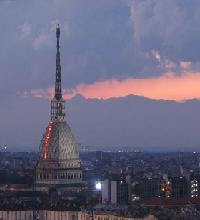+-+Front+cover.jpg)
La prima sensazione che ebbi ascoltando, grosso modo una trentina d’anni fa, “Minstrel in the gallery” fu quella di un album piuttosto “difficile”, con melodie tutt’altro che immediatamente assimilabili, fatta eccezione per "Cold wind to Valhalla". Lo stesso brano d’apertura, che da il nome all’album, presenta Ian Anderson che canta accompagnandosi alla chitarra con frequenti cambi di tempo - dunque, fin dai primi secondi, un ascolto “difficile”, rappresentativo delle sensazioni che, come ho detto, provai le prime volte che ascoltavo il disco. Tuttavia, come nel caso di molte altre produzioni dei Jethro (e, più in generale, del rock progressivo), l’apprezzamento venne con gli ascolti successivi.
Un album basato su strumentazioni prettamente acustiche. Ian Anderson suona la chitarra acustica ben più rispetto a qualsiasi album precedente dei Jethro Tull; inoltre, su tutto spiccano gli arrangiamenti di piano e archi, opera del tastierista John Evan (diplomato, fra le altre cose, al Royal College of Music di Londra). La chitarra elettrica di Martin Barre entra in gioco solo in quei rari momenti di furore “pseudo-hard” e, a quanto pare, è proprio un tale utilizzo parsimonioso a rendere le parti elettriche di Barre decisamente efficaci, come nel caso dei riff presenti in "Black satin dancer" e della timbrica lancinante di "Cold wind to Valhalla".
Un album che possiede tutte quelle caratteristiche dei Jethro Tull che personalmente ammiro: testi “acri”, composizioni lunghe e complesse, nonché la capacità di evocare stati d’animo diversi. Grazie anche ai ripetuti ascolti - desidero sottolinearlo ancora - “Minstrel in the gallery” figura fra i migliori album di Anderson & Co. che prediligo.
Un album basato su strumentazioni prettamente acustiche. Ian Anderson suona la chitarra acustica ben più rispetto a qualsiasi album precedente dei Jethro Tull; inoltre, su tutto spiccano gli arrangiamenti di piano e archi, opera del tastierista John Evan (diplomato, fra le altre cose, al Royal College of Music di Londra). La chitarra elettrica di Martin Barre entra in gioco solo in quei rari momenti di furore “pseudo-hard” e, a quanto pare, è proprio un tale utilizzo parsimonioso a rendere le parti elettriche di Barre decisamente efficaci, come nel caso dei riff presenti in "Black satin dancer" e della timbrica lancinante di "Cold wind to Valhalla".
Un album che possiede tutte quelle caratteristiche dei Jethro Tull che personalmente ammiro: testi “acri”, composizioni lunghe e complesse, nonché la capacità di evocare stati d’animo diversi. Grazie anche ai ripetuti ascolti - desidero sottolinearlo ancora - “Minstrel in the gallery” figura fra i migliori album di Anderson & Co. che prediligo.
Voto personale (scarso / insufficiente / sufficiente / buono / distinto / ottimo / eccellente): Ottimo.
My first impressions of “Minstrel in the gallery”, approximately thirty years ago now, were that it was an incredibly difficult album to listen to, with very little that served as an accessible tune, the only exception being "Cold wind to Valhalla". The opening track itself begins with Ian Anderson accompanying himself with an acoustic guitar that keeps shifting time signatures, making it very hard to grasp on the first listen, and is typical of the problems I initially had. However, as with most of Jethro Tull's catalogue (and of prog rock bands' catalogue at large), repeated listening gives a greater appreciation.
The instrumentation on this album is predominantly acoustic. Ian Anderson plays guitar more often than on any previous album and the distinctive piano and string arrangements of John Evan are used liberally. Martin Barre's guitar is only used when a little bit of pseudo hard-rock mayhem is required, and it is probably this infrequent use which makes him so effective. His hard rock riffs on "Black satin dancer" and howling guitar on "Cold wind to Valhalla" are two of this album's most memorable moments.
This album has all the ingredients I like in Jethro Tull. The acerb lyrics, long, complex compositions, and its ability to evoke a variety of moods are all here. This has long been among my three favorites by the band, mainly for its ability to retain my interest through repeated listenings.
The instrumentation on this album is predominantly acoustic. Ian Anderson plays guitar more often than on any previous album and the distinctive piano and string arrangements of John Evan are used liberally. Martin Barre's guitar is only used when a little bit of pseudo hard-rock mayhem is required, and it is probably this infrequent use which makes him so effective. His hard rock riffs on "Black satin dancer" and howling guitar on "Cold wind to Valhalla" are two of this album's most memorable moments.
This album has all the ingredients I like in Jethro Tull. The acerb lyrics, long, complex compositions, and its ability to evoke a variety of moods are all here. This has long been among my three favorites by the band, mainly for its ability to retain my interest through repeated listenings.
My personal mark (very poor / poor / pass / good / fairly good / very good / excellent): Very good.
JETHRO TULL (1975):
Ian Anderson – flauto, chitarra acustica, voce (flute, acoustic guitar, lead vocals)
Martin Barre – chitarra elettrica (electric guitar)
Barriemore Barlow – batteria e percussioni (drums and percussions)
John Evan – tastiere (keyboards)
Jeffrey Hammond – basso (bass)
Martin Barre – chitarra elettrica (electric guitar)
Barriemore Barlow – batteria e percussioni (drums and percussions)
John Evan – tastiere (keyboards)
Jeffrey Hammond – basso (bass)
TRACK LIST:
1. Minstrel in the gallery
2. Cold wind to Valhalla
3. Black satin dancer
4. Requiem
5. One white duck / 010 = Nothing at all
6. Baker St. muse
7. Grace
2. Cold wind to Valhalla
3. Black satin dancer
4. Requiem
5. One white duck / 010 = Nothing at all
6. Baker St. muse
7. Grace
MINSTREL IN THE GALLERY (JETHRO TULL) - 41,5 MB




















1 commento:
Ho sempre voluto ascoltarlo, e tutti me l'hanno sempre consigliato. E' il momento di agire! ;)
Grazie del consiglio
ciao
Posta un commento